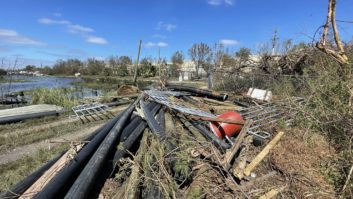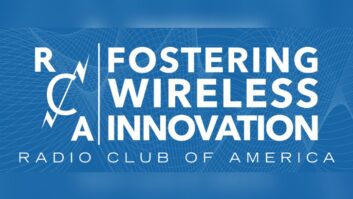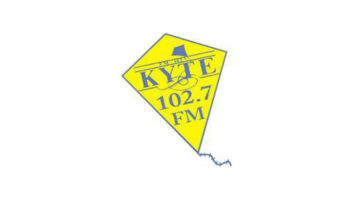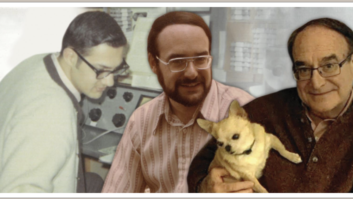It was in 1977 that Broadcast Electronics made the decision to move the company to Quincy, Ill., and begin producing a full line of FM transmitters. Since that time BE has grown significantly — it now calls itself the largest radio-only broadcast equipment supplier — offering a line of products headed by AM and FM transmitters and the AudioVault digital storage and automation system.
Larry Cervon, then president of Broadcast Electronics, was the man behind that notable move. Cervon had taken the helm in 1976, at a time when the company’s product line consisted of audio consoles and tape cartridge machines.
Cervon was born in 1922 on the island of Brac, seven miles off the Dalmation coast of Croatia, then Yugoslavia; he came to New York with his family at the age of 6. He was attending college at the tuition-free College of the City of New York when World War II began.
During the war, Cervon enlisted in the United States Navy, where he joined the Capt. Eddy Electronic Technician Program, an intensive training course in electronics to support the burgeoning military use of radar. After completing the 10-month course he served on the U.S.S. Amphitrite until the end of the conflict.
In November 1945, Cervon was looking for work, having left the Navy. He joined RCA International as a sales trainee in the Broadcast Equipment section, commencing his long career in the field, and eventually moved into sales for Gates Radio, where he worked for almost three decades before going to BE.
Retired in 1991, Cervon now lives in Florida. That year he received an achievement award from the National Association of Broadcasters “in grateful recognition and appreciation for 45 years of vision and leadership in the development of high-technology broadcasting equipment.”
Cervon was honored by BE at a ceremony in Quincy in October 2007, recognizing him for a lifetime of achievement and service in broadcasting. The company dedicated a commemorative plaque for the event, marking the 30th anniversary of the move to Quincy.
We spoke to Cervon after the ceremonies to hear more about his life in the radio industry.
(click thumbnail)Larry CervonHow did you get your start in broadcasting?
It was just kind of an accident that I got involved with RCA. After I left the Navy I was looking for a job where I could use my knowledge of electronics and business. I approached RCA, which at that time was all radio. We were selling medium-wave transmitters in Latin America and worldwide. I then moved to Westinghouse, which also was a radio company.
Gates Radio had approached Westinghouse to sell transmitters made by Gates internationally under the Westinghouse name. That was where I met Parker Gates and Owen McReynolds, the sales manager for the Gates Radio Co. in its New York office.
I took over the New York office for Gates Radio when it moved McReynolds to Washington to open a new office right across the street from the FCC.
What was the radio industry like in those years?
In the late 1940s and early 1950s there was a great demand for radio and a tremendous number of applications for new daytime stations. Regional stations also were being constructed during the 1950s and we were very active in selling them medium-wave transmitters.
The FCC would issue new construction permits every Tuesday. We would walk over and get the list of permits and immediately call our salesmen to give them a list of permits they could use to contact the new station owners. We often were the first to call with the information that the owner had received a permit, and we would offer to advise them on equipment purchases.
My job in those days was to sell radio stations by selling the equipment for radio stations. There were many small radio stations being started literally by doctors, dentists and lawyers who knew little to nothing about the technology, and that was where we came in.
You could buy all the equipment you needed for about $25,000 to $30,000, including a tower, the studio equipment and a 1 kW transmitter. Raytheon, Collins and RCA were the main competition.
At that time, Gates Radio was on the bottom of the totem pole in terms of quality in the design and construction of transmitters. Of the other early manufacturers, Westinghouse concentrated on the high-power medium-wave business, and General Electric decided to pursue the brand-new FM technology.
Over time, Gates Radio became one of the most dominant suppliers of medium-wave transmitters at 1, 5 and 10 kW power levels.
In 1952 I moved to Quincy, Ill., to become sales manager for Gates Radio. My wife suggested we stay for a couple of years for the experience and then move back east.
I ended up living there for 46 years.
How did the radio industry evolve in the 1960s?
Over time, some of the other larger radio companies began to get out of the radio business. Raytheon moved on and GE moved into television.
The radio manufacturing business was no longer growing as fast because there were only so many available frequencies for radio stations to use because of the limitations imposed by the FCC. Radio became more of a niche market. You had to know the industry to do well in broadcasting.
In the 1960s at Gates Radio, we moved into FM transmitters and stereo broadcasting. FM had a slow start but stereo gave the listener something he had never had before. Stereo was a whole new dimension for radio. If it had not been for stereo I’m not sure FM would have grown as rapidly as it did.
When did you move on to working for Broadcast Electronics?
I left Gates Radio in 1974, having worked there for 27 years, after it was acquired by Harris Intertype and they made a change in management.
After a short time working for Microwave Associates, I decided that my main career interest was in radio broadcasting equipment, and so in 1976 I became president of Broadcast Electronics in Silver Spring, Md.
(click thumbnail)Cervon’s award ceremony in Quincy, Ill. Presenting the plaque is Joseph Roark, president and CEO of Broadcast Electronics.I was still living in Quincy at the time and I realized that the cost of manufacturing was much higher on the east coast compared to the midwest. Quincy also had a large number of skilled electronics technicians who had recently been laid off when Motorola closed its Quincy manufacturing plant in the mid-1970s.
I realized I couldn’t make the company grow unless I moved it. We relocated to Quincy in 1977.
Why did you decide to develop a full line of FM transmitters?
Hans Bott was vice president of engineering and we knew right away that we were going to go into transmitters. We decided we were going to build FM transmitters.
We went with FM because it was growing and AM was starting to die out. All of the stations were moving to high-fidelity radio with stereo and building new stations.
Rather than start with a 1 kW and having a tough time convincing radio stations we could build larger models, we decided we would start out with a full 25 kW model.
Who else was part of the engineering team that developed the broadcast product line?
The folded half-wave cavity was developed and patented by Jim Aurand, who had formerly worked for Harris Corp. This became the FM-30, a single-tube 30 kW transmitter. It was the most powerful one-tube transmitter in the world.
Hans Bott then recruited Geoff Mendenhall to design the exciter. Eventually Hans Bott left to become a consultant and Geoff became the vice president of engineering.
After the FM transmitter line was developed we realized we needed to build AM as well so that we could offer a full line of transmitters to meet the needs of any station.
With AM we started at a low power and built the line up to high-power over time. Because of the many 1 kW stations around the United States, we wanted to build small, compact and economical models. When I left in 1991 we still had not gone to higher power but subsequently higher power models were developed.
We also developed the AudioVault, which grew out of the Control 16 automation system, first introduced in 1978. Eventually that technology and knowledge was put to use by John Burtle, the driving force on the Control 16 automation and the AudioVault.
The reason we scooped the industry with AudioVault is that we started to use Microsoft Windows as the architecture. That was a big difference between us and other companies because that architecture had more flexibility.
Those three product lines still define the success of the company.
Who influenced you most in your career in radio?
Parker Gates was my mentor. Gates was really the guy that got Gates Radio Co. moving. He came up with the ideas for many of the products that moved Gates ahead.
His main objective was to match the offerings from RCA. If they came out with an eight-channel console, he would come out with a nine-channel to go them one better.
What do you think about HD Radio and its potential for the U.S. broadcast industry?
I think that it has been adopted pretty quickly by the big stations and in the big markets but the problem is there aren’t really enough receivers around. The smallest-market stations are resisting spending the money to go to IBOC because they can’t see the advantage for their listeners to get them to go out and buy new radios.
I think it will take many years for it to become a standard throughout the country. In AM, the bigger problem is the interference that it causes.
What new technology developments do you see in the radio transmitter industry?
The radio broadcasting industry has evolved, and there is still a stage of refinement that can continue, but there is nothing in the way of a big breakthrough. The basic limitations are the frequencies allowed by the FCC. Particularly AM is at a disadvantage with respect to FM due to the difference in propagation.














